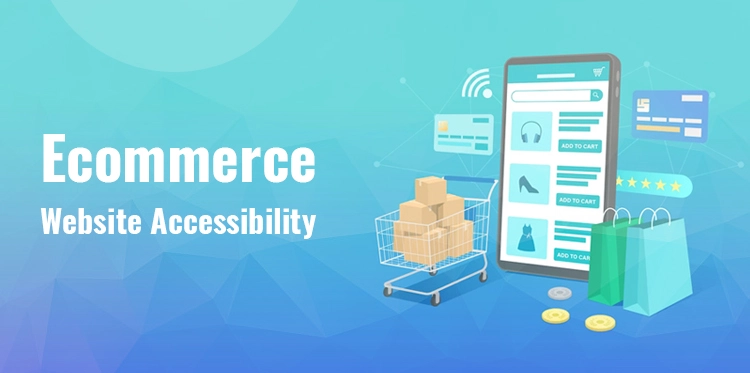Ecommerce Website Accessibility
In recent years, ecommerce has become an integral part of our lives. With the increasing demand for online shopping, businesses are shifting towards building ecommerce websites to reach a wider audience.
Table of Contents
However, as more and more people are relying on these websites, it is crucial that they are accessible to everyone, regardless of their abilities. This is where accessibility checking for ecommerce websites becomes essential.
Accessibility refers to the design and development of products, services, or environments that are usable by people with disabilities.
Because there are over a billion people with disabilities worldwide, accessibility is not just a moral obligation but also a legal requirement in many countries. A lack of accessibility can result in high bounce rates, lost sales and revenue, negative publicity, and legal liabilities.
To protect yourself from the negative effects of noncompliance with accessibility regulations, you need to conduct an accessibility audit.
This involves evaluating the website’s design and development to ensure that it complies with accessibility standards and guidelines. There are several factors that you need to watch for while auditing your website:
1. Clear and concise language
The language used on your ecommerce website should be simple, clear, and concise. Accessible, plain language is crucial for people with cognitive or reading disabilities.
Avoid using complex jargon, acronyms, or technical terms. Use simple sentence structures, headings, and bullet points to make the content easier to understand.
2. Keyboard navigation
Not everyone can use a mouse to navigate a website. People with physical disabilities may use keyboard navigation or other assistive technologies such as voice recognition software. Your website should be navigable using the arrow keys and other directional keys.
3. Alternative text for images
People with visual impairments may use screen readers to access the content on a website. Therefore, you should provide alt text for all images on the website, especially if your website carries product photos.
This will allow the screen reader to describe the image to the user. It will also allow search engines to index your images and make them visible on image searches.
4. Color contrast
Color contrast is important for people with low vision or color blindness. Ensure that your text and background contrast with each other to make the content readable. For example, you may use black text on a white, cream, or yellow background.
If you need to add a background image, try to lighten it so it doesn’t affect readability. Avoid using color alone to convey information. Instead, use the appropriate text for elements such as buttons.
5. Video captions
Videos such as product demos or tutorials on ecommerce websites should have captions for people with hearing impairments. Captions make the content accessible to everyone, regardless of their ability to hear.
6. Form accessibility
Forms on ecommerce websites should be accessible to everyone, including people with disabilities. Ensure that the form labels are clear and descriptive.
Use placeholders sparingly as they can cause confusion for some users. Provide feedback messages for form submission to ensure that the user knows that their action was successful.
7. Appropriate heading structures
Headings are essential for people with visual impairments who use screen readers to navigate a website. Use the appropriate heading structures (H1, H2, H3, etc.) to create a logical hierarchy of content on the website.
This will allow the screen reader to provide the user with an understanding of the website’s content structure.
Accessible ecommerce websites offer excellent user experiences
In conclusion, accessibility checking for ecommerce websites is essential to ensure that the website is accessible to everyone, regardless of their abilities. It is not just a moral obligation but also a legal requirement in many countries.
Ecommerce websites that are not accessible can result in lost sales and revenue, negative publicity, and legal liabilities. By following the steps outlined above, your business can ensure that your ecommerce website is accessible and provides a positive user experience for all.

